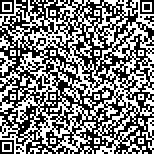Archive > Volume 48 Issue 5 > 2022,48(5):580-594. DOI:10.7519/j.issn.1000-0526.2021.101801 Prev Next
Influence of Densely-Observed Radiosonde Data Assimilation on Numerical Simulation of Atmospheric Boundary Layer in Beijing Area
- Article
- Figures
- Metrics
- Preview PDF
- Reference
- Related
- Cited by
- Materials
Abstract:
Based on the 3 h densely-observed radiosonde data from Baolian Station, Chaoyang Station, and Daxing Station in Beijing from 28 August to 2 September 2016, and using the WRF V3.9.1 model and WRF-3DVar system, a numerical simulation test of the atmospheric boundary layer in the Beijing Area was carried out to study the impact of the densely-observed radiosonde data assimilation on the numerical simulation of the boundary layer. The results show that the analysis field formed by assimilation is closer to the observation than the background field, and it can better represent the thermal, humidity and dynamic characteristics of the real atmosphere in the boundary layer. Respectively compared with the background field, the root mean square errors of the analysis field of potential temperature, specific humidity, zonal wind, meridional wind, and wind speed are reduced by 86%, 59%, 24%, 44%, 19% correspondingly, showing a strong correction effect of assimilation. The prediction effect of the densely-observed radiosonde data assimilation within 6 hours of model integration is the best, but gradually weakens in size and scope after 6 hours. The densely-observed radiosonde data assimilation improves the atmospheric humidity in the boundary layer throughout the forecast period. The improvement of the atmospheric thermal state in the boundary layer lasts for 6 hours. For the atmospheric dynamic characteristics in the boundary layer, the zonal wind improves most, the meridional wind and wind speed are not obvious, which are related to the nature of the wind and the complex terrain of Beijing. In addition, the relatively small number of sites for densely-observed radiosonde data in the spatial horizontal direction is one of the reasons that the assimilation effect has a significant improvement in the analysis field but is difficult to last for a long time.
Keywords:
Project Supported:
Clc Number:


Mobile website









